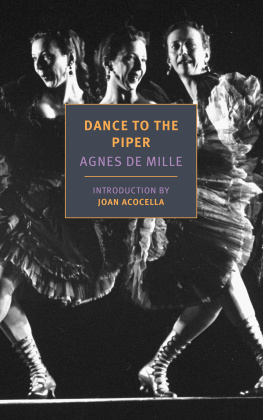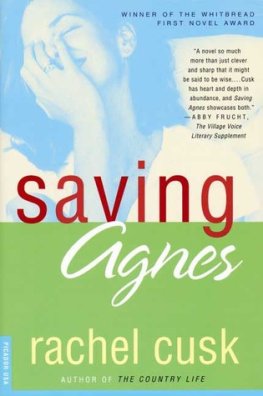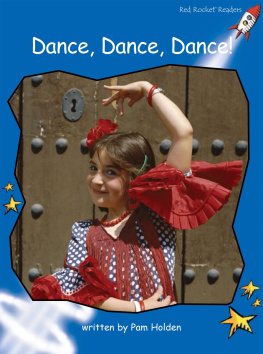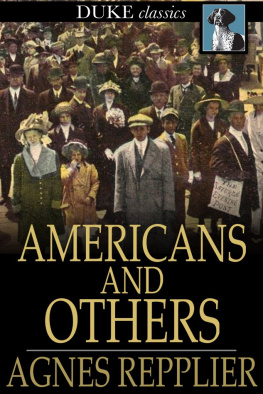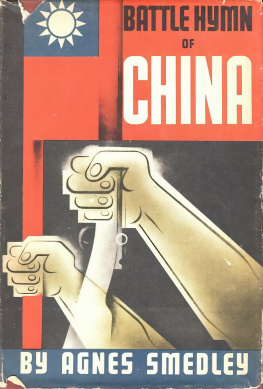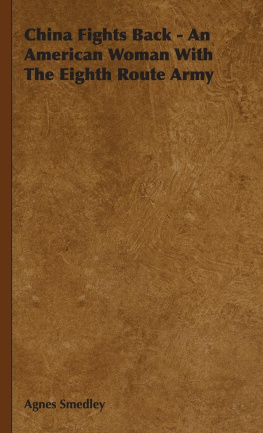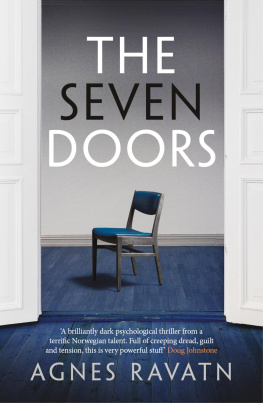Agnes de Mille - Dance to the Piper
Here you can read online Agnes de Mille - Dance to the Piper full text of the book (entire story) in english for free. Download pdf and epub, get meaning, cover and reviews about this ebook. year: 2015, publisher: New York Review Books, genre: Non-fiction. Description of the work, (preface) as well as reviews are available. Best literature library LitArk.com created for fans of good reading and offers a wide selection of genres:
Romance novel
Science fiction
Adventure
Detective
Science
History
Home and family
Prose
Art
Politics
Computer
Non-fiction
Religion
Business
Children
Humor
Choose a favorite category and find really read worthwhile books. Enjoy immersion in the world of imagination, feel the emotions of the characters or learn something new for yourself, make an fascinating discovery.
- Book:Dance to the Piper
- Author:
- Publisher:New York Review Books
- Genre:
- Year:2015
- Rating:4 / 5
- Favourites:Add to favourites
- Your mark:
- 80
- 1
- 2
- 3
- 4
- 5
Dance to the Piper: summary, description and annotation
We offer to read an annotation, description, summary or preface (depends on what the author of the book "Dance to the Piper" wrote himself). If you haven't found the necessary information about the book — write in the comments, we will try to find it.
Dance to the Piper — read online for free the complete book (whole text) full work
Below is the text of the book, divided by pages. System saving the place of the last page read, allows you to conveniently read the book "Dance to the Piper" online for free, without having to search again every time where you left off. Put a bookmark, and you can go to the page where you finished reading at any time.
Font size:
Interval:
Bookmark:

AGNES DE MILLE (19051993) was born in New York City, the daughter of the writer and director William C. de Mille, and the niece of the well-known film producer-director Cecil B. DeMille. Raised in New York and California, she attended the University of California, Los Angeles, and trained to become a dancer, studying in New York and London and touring with companies in the United States and Europe. In 1942 de Mille had her first great success as a choreographer with Rodeo. She went on to choreograph celebrated musicals such as Oklahoma! and Carousel, and the award-winning Brigadoon and Kwamina, fusing modern and classical dance techniques to create her own innovative style. She also wrote widely about her work as a dancer, the early years in Hollywood, and childhood summers spent at the family estate in New York. Despite a stroke in 1975 that led to partial paralysis, de Mille continued to work, choreographing dances for the American Ballet Theatre and other companies, as well as writing and lecturing. In 1986 she was awarded the National Medal of Arts for her lifetime achievement in the theater.
JOAN ACOCELLA is a staff writer for The New Yorker. She is the author of Mark Morris; Creating Hysteria: Women and Multiple Personality Disorder; Willa Cather and the Politics of Criticism; and Twenty-Eight Artists and Two Saints. She also edited the unexpurgated Diary of Vaslav Nijinsky.
DANCE TO THE PIPER
AGNES DE MILLE
Introduction by
JOAN ACOCELLA
NEW YORK REVIEW BOOKS

New York
THIS IS A NEW YORK REVIEW BOOK
PUBLISHED BY THE NEW YORK REVIEW OF BOOKS
435 Hudson Street, New York, NY 10014
www.nyrb.com
Copyright 1951, 1952 by Agnes de Mille
Introduction copyright 2015 by Joan Acocella
All rights reserved.
Cover photograph: Gjon Mili, Multiple exposure of choreographer Agnes de Mille dancing, 1944; Gjon Mili / The LIFE Picture Collection / Getty Images Cover design: Katy Homans
Library of Congress Cataloging-in-Publication Data
De Mille, Agnes.
Dance to the piper / Agnes De Mille ; introduction by Joan Acocella.
1 online resource.
ISBN 978-1-59017-909-3 (ebook) ISBN 978-1-59017-908-6 (print)
1. De Mille, Agnes. 2. DancersUnited StatesBiographyJuvenile literature. 3. ChoreographersUnited StatesBiographyJuvenile literature. I. Title.
GV1785.D36
792.8092dc23
[B]
2015019896
ISBN 978-1-59017-909-3
v1.0
For a complete list of books in the NYRB Classics series, please visit www.nyrb.com or write to:
Catalog Requests, NYRB, 435 Hudson Street, New York, NY 10014
O F THE choreographer Agnes de Mille it has been said that she was a better writer than she was a choreographer. Thats not the way she planned it. She made twenty-one ballets and the dances for fifteen musicals, and she worked on them till her brain practically bled. She had several huge successes, above all, her cowboy ballet, Rodeo (1942), plus the dances for Rodgers and Hammersteins Oklahoma! (1943) and Carousel (1945). By the end of the 1940s she was the best-known choreographer in America. What remains in repertory today, however, is just Rodeo and two lesser ballets, Three Virgins and a Devil (1941) and Fall River Legend (1948). As for her writing, she claimed she did it, or at least began doing it, quite casually, whenever I had fifteen minutes to spare, on buses, subways, in dressing rooms, in drugstores, at times in the waiting room of the Childrens Hospital. The manuscript consisted of letter paper, wrapping paper, programs, envelopes, paper napkins.... A great deal of it was written with a child crawling around my neck or being sick on my lap... In time she wrote eleven books that together constitute the most searching and intelligent report, and the only comprehensive insiders report, on the great development of which she was part, the establishment of dance as a theater art in America in the early twentieth century. The best of the eleven volumesthe most spontaneous-seeming, the most poignant, and also the most funis the first, the one she implies she delivered to the editor in a shopping bag: her memoir Dance to the Piper (1951).
De Mille came from a family of thinkers and writers. Her mothers father was Henry George, a famous economist in his time. Her paternal grandfather, together with her father, William, and her uncle Cecil, worked on Broadway, writing, producing, directing, acting. In the 1910s, though, both brothers suffered professional disappointments, and they turned their eyes towards a new form of theater: cinema. First Cecil, then William, moved to Hollywood and sent for their families. William became a respected screenwriter and director, Cecil became Cecil B. DeMille, and little Agnes watched these men and their colleagues hatch miracles out of very unpromising material. When Agnes moved to Hollywood, the train depot stood opposite an ostrich farm. Rattlesnakes crawled through the actors dressing rooms. The sound stages had no roofs. (If it rained, everybody went home.) Since the films were silent, musicians were employed to supply the actors with a sort of rhythm:
They played anything they liked, appropriate or not, and they played without cease, through hammering, sawing, dragging, calling, banging, whispering and sobbing. In moments of intense passion, the violinist generally moved in close to the scene of operations like a good anesthetist, carefully feeding the efforts of the earnest young woman who was attempting to pull emotional significance out of thin air. She was given no build-up, no springboard of audience excitement, no pattern evenjust told to pump out raw emotion under a blazing sky while she watched the yelling director or the chicken hawks overhead.
When, in Cecils early spectaculars, Geraldine Farrar (as Joan of Arc) was burned at the stake or Gloria Swanson (in Male and Female) was thrown to the lions, the de Mille ladies watched from an open car, with a picnic basket. Few of the people who worked on those early films, Agnes writes, were artists, but they all had the pleasure and pride of believing they might be.
Agnes got the idea that she might be, too. Unfortunatelyor, at least, inconvenientlyfor her, the art she chose was ballet. When she was thirteen her mother took her to a matinee concert by the great Russian ballerina Anna Pavlova. At the end of that afternoon, she writes, I was as clearly marked as though she had looked me in the face and called my name. At that time, however, Agnes was coming into her mature body, and it was not that of a ballet dancer. She was short, big-busted, and big-bottomed, with short arms and legs. And she wasnt just plump, she says. It turned out that I was ugly, with an awful Jewish nose. (Her paternal grandmother was Jewish.) To a reader of today, the frequency with which she tells us about her lack of beauty, and how other people remarked on it, seems bizarre, even neurotic. She recalls her uncle Cecil advising her that she cant be photographed. (Teeth and nose you know, he said.) She remembers a teacher who counseled her that if she was determined to go on the stage, she should act, not dance. (Look at yourself in the mirror, the teacher said.) In fact, as the photographs show, de Mille was not homely. She was just a regular-looking personshe looked like the people walking down ones streetbut this was Hollywood, home of the beautiful, or of beautiful women. As for the anti-Semitism, we are talking about the 1920s and 30s.
Font size:
Interval:
Bookmark:
Similar books «Dance to the Piper»
Look at similar books to Dance to the Piper. We have selected literature similar in name and meaning in the hope of providing readers with more options to find new, interesting, not yet read works.
Discussion, reviews of the book Dance to the Piper and just readers' own opinions. Leave your comments, write what you think about the work, its meaning or the main characters. Specify what exactly you liked and what you didn't like, and why you think so.

